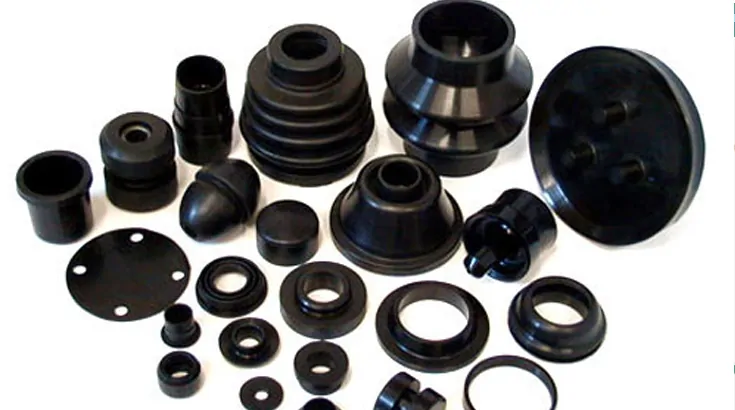The Process Behind High-Quality Rubber Molded Product Manufacturing
Discover the process behind high-quality rubber molded product manufacturing, from material selection to molding, quality control, and distribution.

Rubber molded products are everywhere, from car parts to medical devices. They play a crucial role in many industries, providing essential functions like sealing, insulation, and protection.
To achieve high-quality rubber products, manufacturers must follow a detailed process. This article will walk you through the steps involved in Rubber molded products manufacturers emphasizing the importance of each stage.
1. Understanding Rubber Materials
The manufacturing process begins with selecting the right rubber material. There are various types of rubber, each with unique properties. The most common materials include:
- Natural Rubber
Known for its excellent elasticity and resilience, it is often used in tires and seals.
- Nitrile Rubber
Resistant to oils and fuels, making it ideal for automotive and industrial applications.
- Silicone Rubber
Flexible and temperature resistant, often used in food processing and medical devices.
- EPDM Rubber
Highly resistant to weather and ozone, commonly used in roofing and automotive seals.
Choosing the right material is crucial, as it affects the final product's performance, durability, and safety.
2. Designing the Mold
Once the material is selected, the next step is designing the mold. This is a critical stage, as the mold determines the final shape and dimensions of the rubber product.
- CAD Software
Designers use Computer-Aided Design (CAD) software to create precise 3D models of the mold. This software allows for accurate dimensions and detailed designs.
- Mold Types
Molds can be single-cavity or multi-cavity, depending on the production needs. Multi-cavity molds allow manufacturers to produce several parts at once, increasing efficiency.
A well-designed mold ensures that the rubber product meets specifications and functions as intended.
3. Creating the Mold
After the design is finalized, the mold must be created. This process typically involves:
- Machining
The mold is crafted from materials like steel or aluminum, which are durable and can withstand high pressures and temperatures.
- CNC Machining
Computer Numerical Control (CNC) machines are often used for precision machining. This technology allows for intricate designs and tight tolerances.
The quality of the mold directly impacts the quality of the final rubber product, so attention to detail is essential during this stage.
4. Preparing the Rubber Compound
Before molding, the rubber must be prepared. This involves mixing the raw rubber with various additives to enhance its properties. Common additives include:
- Vulcanizing Agents
These chemicals, such as sulfur, help cross-link the rubber molecules, improving strength and elasticity.
- Fillers
Materials like carbon black are added to enhance durability and resistance to wear.
- Plasticizers
These substances increase flexibility, making the rubber easier to mold.
The preparation of the rubber compound is a crucial step, as the right mixture ensures the product's performance and longevity.
5. Molding Process
The actual molding process can vary based on the type of rubber and the desired product. However, the basic steps are similar:
- Loading the Mold
The prepared rubber compound is loaded into the mold. This can be done manually or automatically, depending on the scale of production.
- Applying Heat and Pressure
The mold is then heated to a specific temperature, allowing the rubber to flow and take the shape of the mold. Pressure is applied to ensure that the rubber fills all cavities and forms a tight seal.
- Curing
During this stage, the rubber undergoes a chemical reaction called vulcanization, which strengthens the material. This process typically takes anywhere from a few minutes to several hours, depending on the rubber type and product design.
Proper temperature and pressure control during molding are critical to achieving high-quality results.
6. Cooling and Removing the Product
After the curing process, the mold is cooled to allow the rubber to solidify. Once cooled, the molded product can be removed from the mold.
- Ejection Systems
Many molds are equipped with ejection systems that help release the product without damaging it.
- Trimming and Finishing
After removal, excess rubber (flash) is trimmed away, and the product may undergo additional finishing processes, such as polishing or coating.
This step ensures that the final product meets aesthetic and functional standards.
Conclusion
The process behind high-quality rubber molded product manufacturing is intricate and involves several critical steps. From selecting the right material to designing and creating molds, each stage plays a crucial role in the final product's quality and performance.
What's Your Reaction?















